
Mass Etiquette and Information
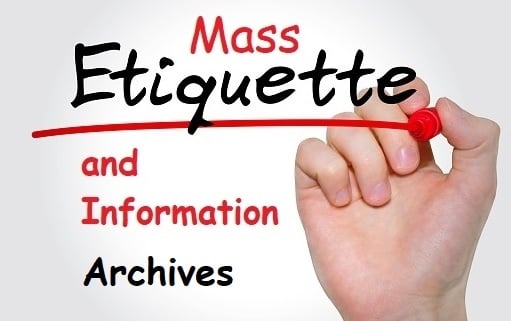

No Snacking - November 24, 2019
Please do not bring food or drinks to church. A Catholic Church is the house of God. We come to worship, not to snack as in a movie theatre. Chewing gum is also inappropriate and forbidden for anyone intending to receive Holy Communion. Cough drops or medicinal lozenges when needed are alright.
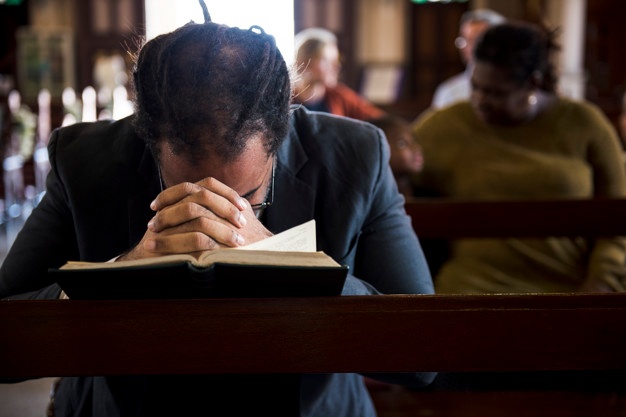
Place of Prayer - December 1, 2019
A Catholic Church is the temple of God. We should be respectful of God’s actual presence in the Tabernacle. Part of what this means is that we shouldn't be talking to our neighbour while in church. While in church we should be thinking about the things of God and praying, not talking or checking phone messages. Note that talking in church disturbs and distracts those trying to pray.

Hygiene - December 8, 2019
It is in the colder months that we tend to catch a cold or the flu. Be sure to wash your hands before coming to Church. Most of the germs we catch are transmitted by hand. If you are receiving Communion in the hand, you should be especially careful to ensure that your hands are clean. You should not be receiving on the hand if you have a Kleenex or rosary in your hand.
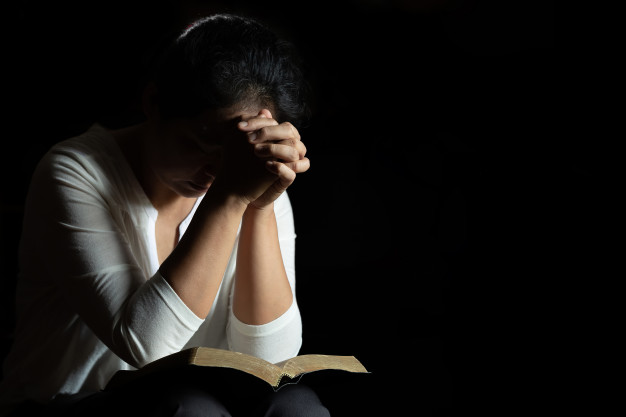
How to Get More - December 15, 2019
Preparation for Mass and thanksgiving after Mass helps us get more out of Mass and enables us to receive more of the graces and blessings that come to us through the Mass. A preparation prayer as well as a thanksgiving prayer are printed on our pew cards. We may not grasp or understand that our attentive and devout participation in Mass will benefit us more than anything else for this life and for the next.
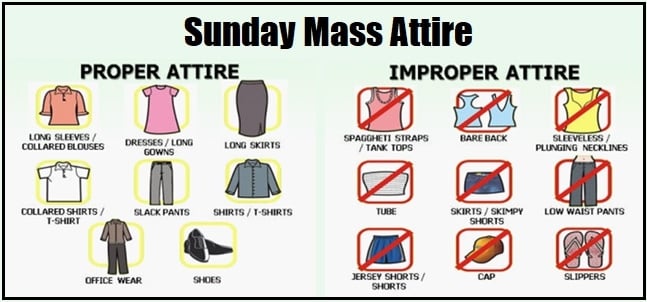
Attire - December 22, 2019
Wearing our Sunday best, or at least wearing decent attire, is done to honour our Lord and to remind ourselves that every Mass is an extremely special event. This is also why priests get dressed up in fancy liturgical vestments. Think about it, God actually comes to us in the Eucharist! The sacrifice of Calvary actually becomes present on our altars and we are fortunate to benefit by our participation in offering this Sacrifice in union with Jesus to our heavenly Father. It is because of this sacrifice of Jesus that we have had our sins forgiven and no longer have to fear Hell but can hope for Heaven. When coming to church, women traditionally covered their heads with a veil, and can still do so or wear hats in church. Men are not permitted to wear a hat or any head covering in church. An exception might be someone who has to wear a head bandana on account of his unsightly surgical scars. Other exceptions might be a priest’s biretta or a bishop’s miter.
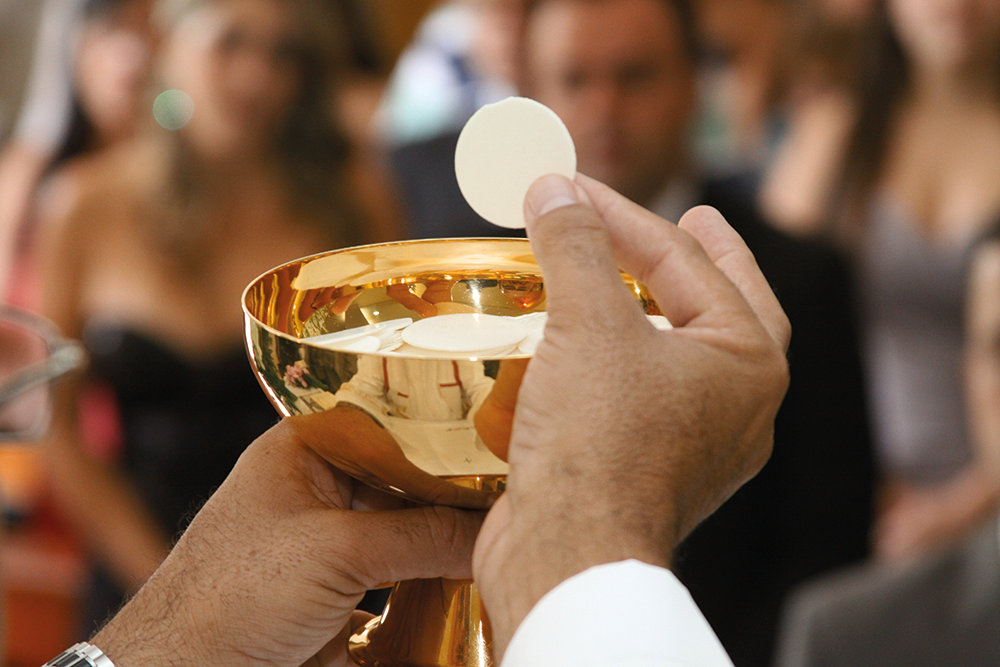
Christmas - December 29, 2019
The word “Christmas” comes from old English and is the combination of two words; ‘Christ’s Mass’. Every Mass is the Mass of Christ for many reasons. Christ is present at every Mass. Christ is especially present when He speaks the words of consecration over the bread and wine through His priest, using the priest as His instrument. Christ becomes truly, substantially present after each consecration. When the priest elevates the consecrated Host, and afterward the consecrated Chalice, we are looking at Christ: at the living God who became incarnate for us. Christ is truly present, Body, Blood, Soul and Divinity, only His appearance looks different. The first consecration corresponds to Christ’s birth; He is born for us on our altars now, at every Mass. The second consecration corresponds to His Crucifixion; when he shed so much blood that His body and blood were separated, just as they are separated on our altars during the Mass.
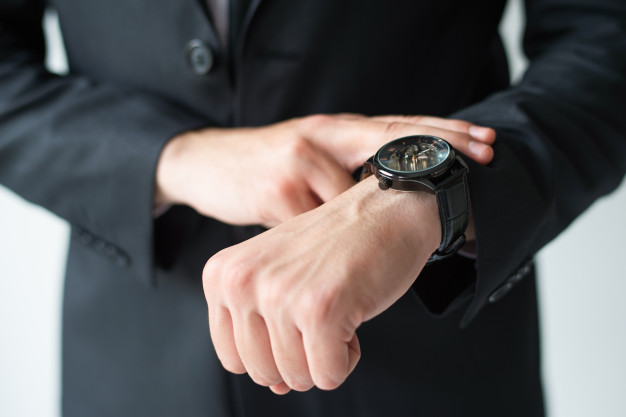
Punctuality - January 5, 2020
It is important to be on time for Mass. Many people are on time for doctor’s appointment or for the movies, but not for Mass. Mass is our personal appointment with God! It is more important than anything else. Arriving early is even better, so we can quiet our mind of distractions and prayerfully prepare for Mass. Arriving after a certain point of the Mass may mean that we haven’t fulfilled our Sunday obligation. If you are a little late, try to enter the church in such a way that you do not cause a distraction.
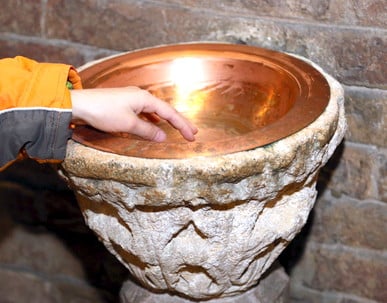
Holy Water - January 12, 2020
When we enter the physical building of a church, we dip our finger in the holy water font and make the sign of the cross. This serves as a reminder to us that it is through the waters of baptism that we have entered, not a physical building, but into the Mystical Body of Christ; the Church. We make the sign of the cross to remind ourselves that it is by the Cross or Crucifixion of Christ that our sins have been forgiven and that we can be saved. We say to ourselves, “In the name of the Father,...” to remind ourselves of our belief in the Trinity; one God, but three Persons in God. This also reminds us that we want to act in His name, as He would want us to act. Holy water is a sacramental and so doing this devoutly enables us to receive more of God’s blessings and to cleans us of slight venial sins.

Candles - January 19, 2020
Before the time of electrical lighting, candles served the practical purposes of illuminating the altar. There is also a symbolic significance of candles on, or around, the altar which derives from the Jewish traditions. Jewish people use the Menorah, as prescribed by Scripture, which is one central candle surrounded by three candles on each side. The base for the three candles on each side originates from the base of the central candle. The seven candles allude to the different branches of human knowledge, represented by the six candles inclined towards, and symbolically guided by, or originating from, the light of God represented by the central candle. The Menorah also represents the creation in seven days, or seven periods of time, with the central light representing the Sabbath, indicating that every other day of the week should be geared towards God and our worship of Him. In the Catholic tradition there were six candles on the altar or just behind it, with the Crucifix in the centre. The crucifix takes the place of the seventh, central candle of the Menorah since Christ is God and all graces flow from His crucifixion and all human wisdom is rooted in Christ. For low Masses only two candles would be lit, whereas for high Masses all six would be lit. When a bishop celebrates Mass in his own diocese, a seventh candle is added to symbolize that Christ’s official teachings come through His bishops. The book of Revelation speaks of seven lamp stands and points out that Christ is the source of true light.
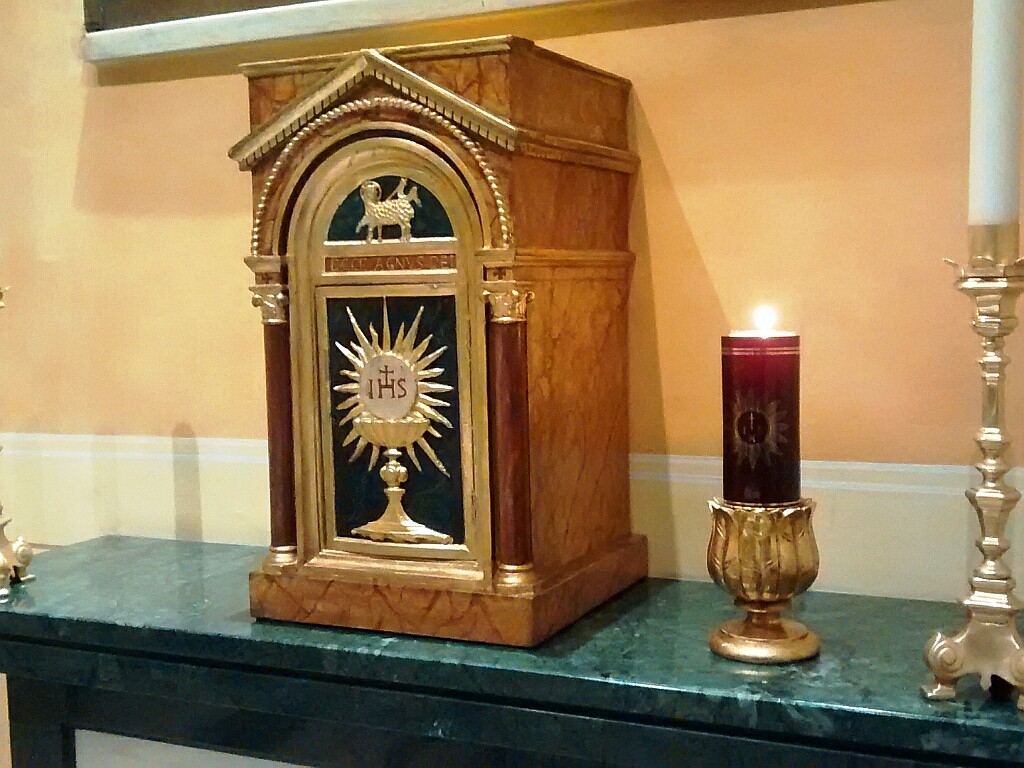
Red Candle by Altar - January 26, 2020
Recall how Moses noticed a burning bush on top of Mount Horeb (also called Mt. Sinai). The flames of the fire did not consume the bush. This led Moses to go up the mountain, where he encountered and spoke to God. The burning bush symbolized the presence of God; that Moses was on holy ground. In Catholic Churches, the candle by the Tabernacle is lit at all times to symbolize the burning bush and to remind us that Jesus/God is truly present in the Tabernacle and that we are on holy ground. It is only on Good Friday, when the Tabernacle is emptied, that we do not have the red candle burning by the Tabernacle.
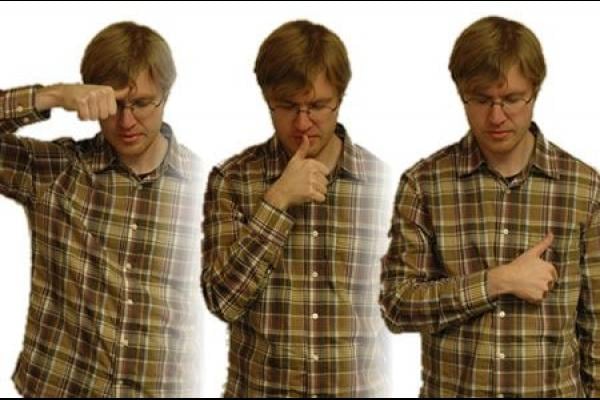
Signing ourselves at Gospel - February 2, 2020
When the priest introduces the Gospel reading we make the sign of the cross on our forehead, lips and chest. Each of these little crosses is a little blessing upon ourselves, reminding us of the supremacy of the Gospel reading over all other Scripture reading, since the Gospel is about Christ or the very words He spoke. We bless our forehead (or mind really) so that we may attentively ponder and understand the words we are about to hear, we bless our lips so that after we have heard the Gospel, we may be bold enough to proclaim it to others. We bless our chest so that what we are about to hear, we may treasure in our heart and, hopefully, never forget.
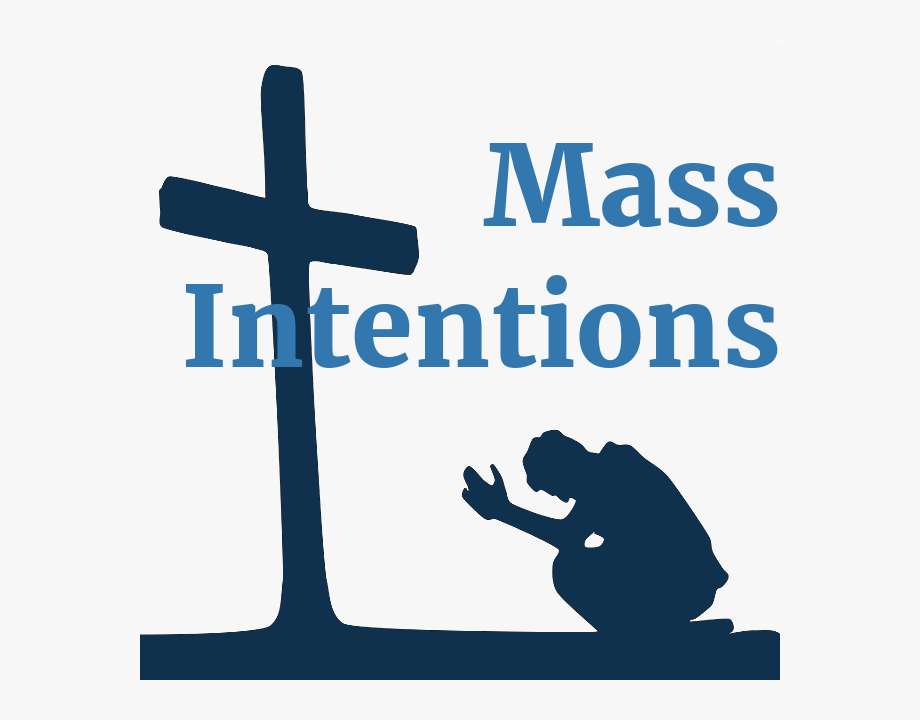
Intentions of the Mass - February 9, 2020
The celebration of the Mass is usually offered for a specific intention, or intentions: usually for a person or persons, living or deceased. What we are offering is the Sacrifice of Calvary (Christ Crucified) made present on our altars, which is primarily what the Mass is, and we are offering it specifically for the individual or individuals mentioned in the intentions. Intentions are usually read out by the priest at the beginning of the Mass, such as, “This Mass is being offered for....” Note that it is not necessary for the priest to do this. When the priest does announce the intention of the Mass, all the faithful should unite in offering the Mass for the specific intention. What we are really doing is offering Jesus Crucified to our Heavenly Father and applying the merits that Christ obtained by His passion and death to the specific intention that the Mass is being offered for. This is a great act of charity. It is important to keep in mind that in addition to the primary intention of a particular Mass, each of us can offer the same Mass also for our own intention; whether it is for something we need or for a person we wish to pray for. Doing this can also help make the Mass more meaningful to ourselves. The public, or announced, intention of a Mass must be booked through the parish office, or in the Gift Shop, after Sunday Masses, for a suggested donation of $20.
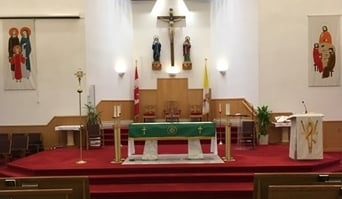
The Altar - February 16, 2020
Our Catholic tradition states that Christ is the Priest, the Victim and the Altar of His own self-sacrificial offering. He is the priest because He offers Himself, the Victim, to His heavenly Father. Christ’s body is also an altar, since it is the “place” where His offering is made. For these reasons, the altar, in Catholic churches represents Christ; it is the "place" where Christ’s offering becomes truly present for us. Guidelines recommend that altars be made of beautiful, decorative stone and that they be secured in place. These elements also remind us that Christ is beautiful and the immovable Rock, the Foundation Stone for all our beliefs, and that He is always in our midst, and always will be; unmovable. The altar is also the threshold to heaven. It is the place where heaven and earth meet, where the eternal God becomes present to us in time. For all these reasons, the priest and ministers will bow to, or reverence, the altar before and after Mass. The servers will bow to the altar when they place things on it or remove things from it. The priest will also kiss the altar before and after Mass, symbolizing his love of Christ and in gratitude for Christ’s self-sacrifice which becomes present on the altar. The priest also bows and prays before the altar prior to reading the Gospel, invoking Christ’s blessings.
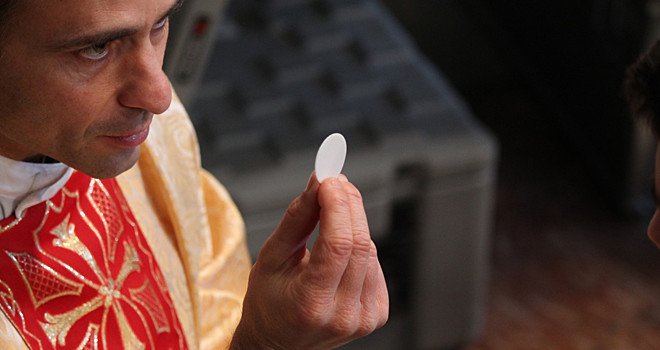
Not Chewing the Host - February 23, 2020
After having received Holy Communion, you should not chew Our Lord. You should allow the Host to dissolve in your mouth and swallow it as soon as possible. Part of the reason for this is out of respect for Our Lord, truly present in the Eucharist. We don’t want to treat Him as ordinary food, that we munch on. Another reason is that by chewing the Host, we are likely to have Particles remain between our teeth. Who knows what might happen to those Particles later; mixed with other food, stuck in chewing gum, or flossed out and into the garbage. There are, of course, exceptions. The priest must chew the Sacred Host because he receives a much larger portion. There may also be some people, usually the elderly, who have very dry mouths, who need to chew to be able to get the Host to go down.
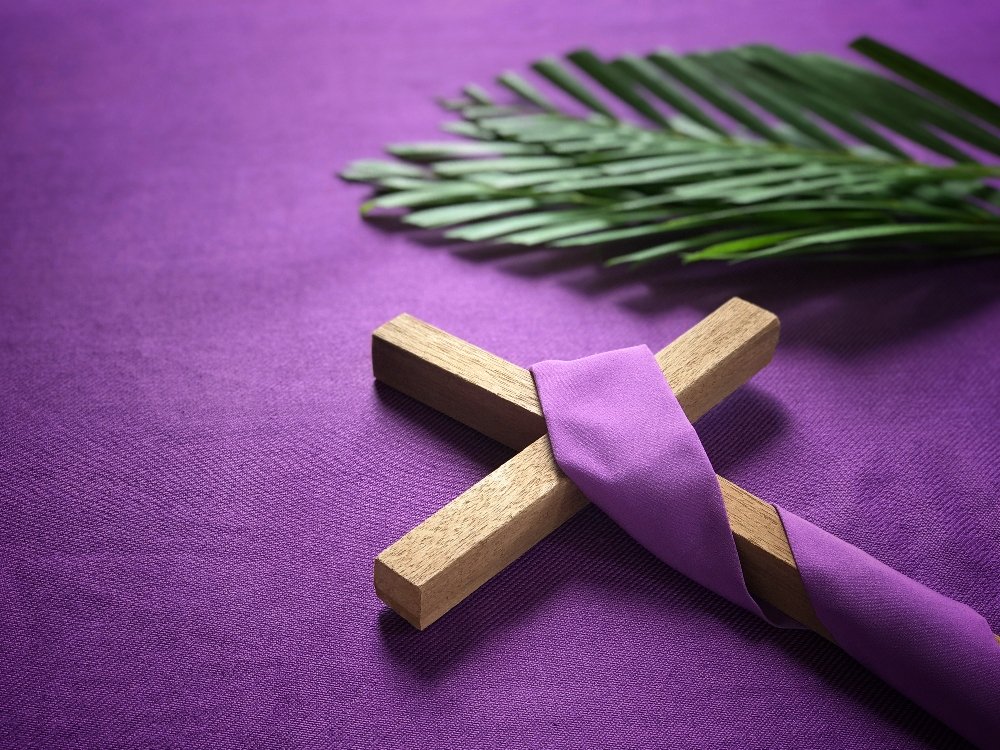
Lenten Resolutions - February 23, 2020
Every Catholic is called to strengthen their spiritual life during the season of Lent. We should all make reasonable but challenging resolutions in three areas of our lives; our prayer life, self-denial, and charitable works. Pick something for each of these three that you can reasonably do for the entire period of Lent, but something that will have a good level of challenge or difficulty. Keep in mind that your penances, or resolutions, should not be a burden to others. Some suggestion examples: Pray more, read from New Testament daily, come early to Mass to prayerfully prepare; give up TV or watch less, reduce time on social media, don’t snack, give up sweets, exercise regularly, don’t sleep in, take a colder shower; be more helpful around the home, visit or call relatives or old friends, do nice things for others, be more cheerful, befriend someone, give to charitable organizations, be kind and polite.
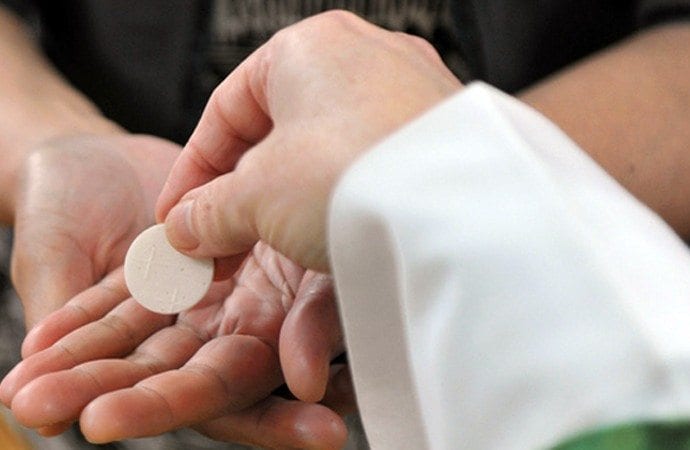
Right after I receive the Host - March 1, 2020
If you are receiving Holy Communion on the hand, be sure to consume the Host in front of the priest or Extraordinary Minister of Holy Communion. Making the sign of the cross after Holy Communion is not a practice of the Church, and should not be encouraged. Making a sign of the cross after Communion implies that something more is wanting in Holy Communion; the Source of all blessings and graces. While it is not forbidden to make the sign of the cross, please don’t do it in front of the person giving you Communion. When you return to your pew, you can kneel or sit and you should speak to Christ who has just entered into your soul. Thank Him, or our Heavenly Father, for this Precious Gift of infinite value. Express your Love and gratitude. You may then join in whatever hymn is being sung, which ideally should be expressive of our faith and a kind of prayer we offer up. Take advantage of the time of silence, once the priest sits down, to continue to commune or communicate with God. You can also continue this communion of love and prayer after Mass has ended, which is highly encouraged. For about ten or fifteen minutes after you receive Holy Communion, Our Lord’s presence within your soul is extremely great. The union between you and God at that time is stronger than at other times because you have not had much chance to commit many small sins which we are often unaware of, and which diminish our union with God.
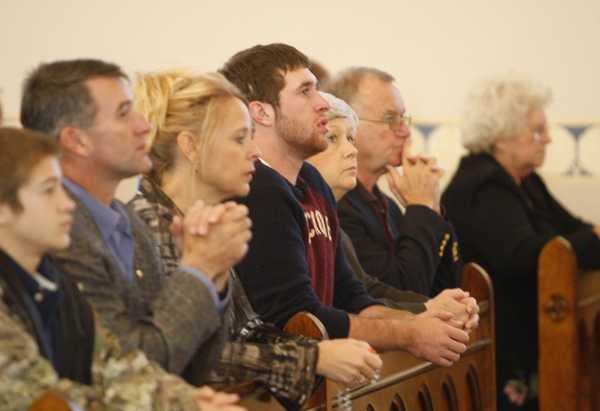
Active Participation - March 8, 2020
Full and active participation in the Mass does not mean that you have to be doing one of the ministries. We participate by having the right dispositions of mind and heart. The Vatican Document, Redemptionis Sacramentum, issued in 2004, states, “The constant teaching of the Church on the nature of the Eucharist not only as a meal, but also and pre-eminently as a sacrifice, is therefore rightly understood to be one of the principal keys to the full participation of all the faithful in so great a sacrament.” (Par. 38). The consecration of the bread and wine, not only makes present the Body and Blood of Christ but also His Crucifixion. We do not see His bruised and bloodied body, or the nails piercing Him, but we are in the presence of His Crucifixion, and we should meditate on that during the Mass. We unite with Christ, in offering Christ Crucified, to our Heavenly Father. It is from this one sacrifice that all God’s graces flow to us.
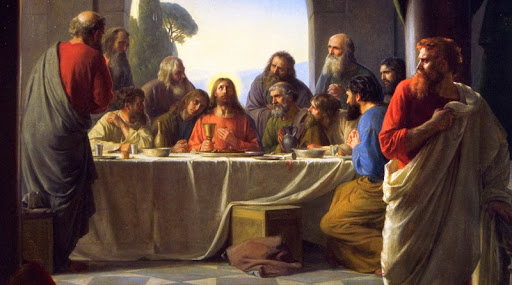
Sacrilegious Communion - March 15, 2020
To receive Holy Communion one has to be a baptized Catholic, must have made their First Communion, must believe in the Real Presence of Our Lord in the Eucharist, must be in a state of grace, and must observe the one hour fast before receiving. One must also be in union with the Church; not rejecting any dogma or official moral teaching of the Church. A person who does not meet all these criteria, should not receive Holy Communion. If one is in a state of mortal sin, for example, and receives Holy Communion, they are committing a sacrilegious Communion, which is very detrimental to themselves. It is a grave sin. Christ cannot remain within them, and so there is a saying that, “One crucifies Christ anew by forcing Him into oneself”, where He cannot remain and is not really welcome until the person has gone to confession and been reconciled with God and His Church.
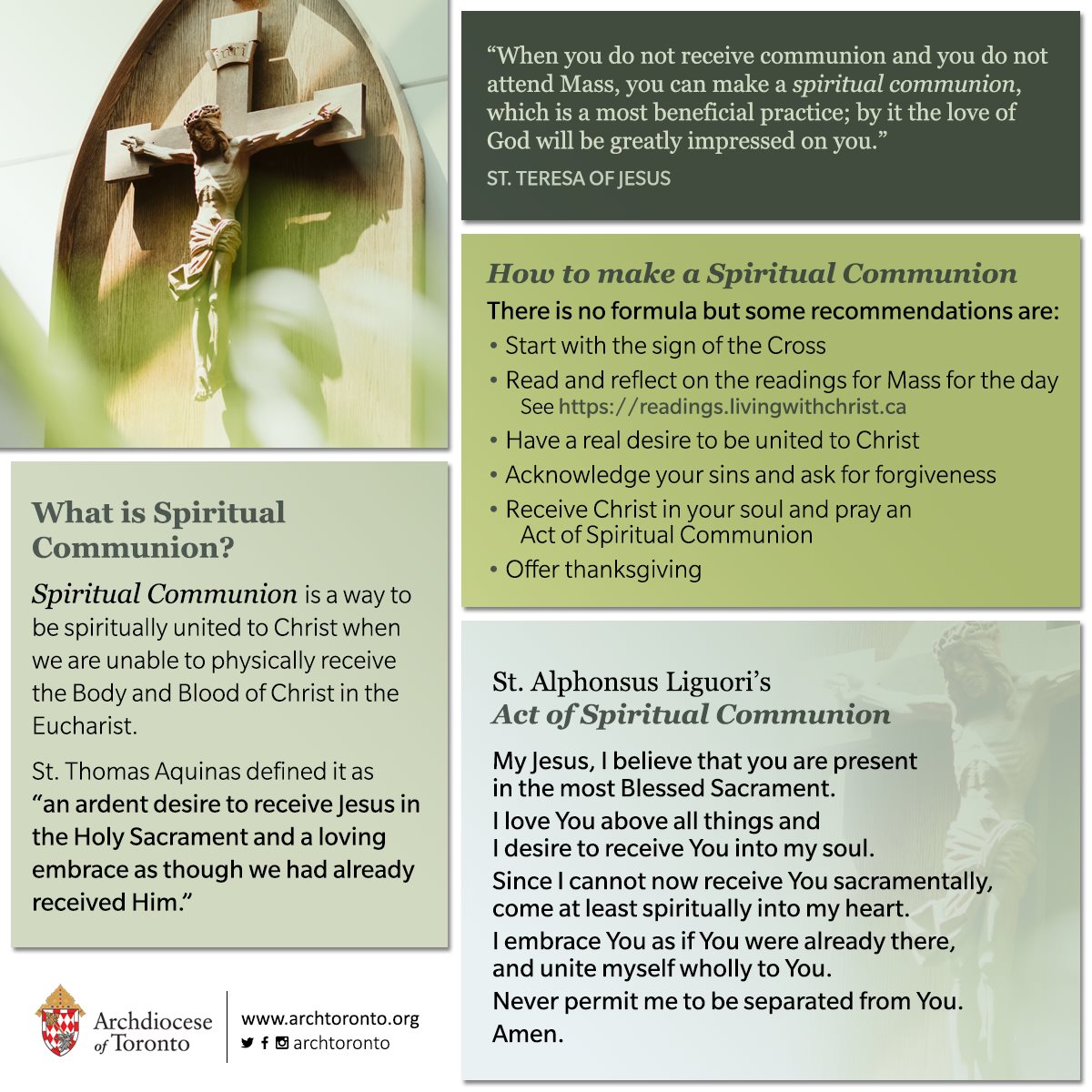
Spiritual Communion - March 22, 2020
When we are not able to receive Holy Communion, which may be for a number of reasons, we are encouraged to make a Spiritual Communion. In fact, even when we can go to Mass daily and receive Our Lord daily, we are encouraged to make many Spiritual Communions throughout the day. A Spiritual Communion is a manifestation of our desire to be one with Our Eucharistic Lord. We should imagine ourselves actually receiving Him, and loving Him within us, conversing with Him as if we had received Him. When we do this, God rewards our love and our longing for Him and He gives many graces, as He would when we actually do receive Him. There are many beautiful prayers to aid is in making a Spiritual Communion. Here is one that is used on EWTN: My Jesus, I believe that You are present in the Most Holy Sacrament. I love You above all things, and I desire to receive You into my soul. Since I cannot at this moment receive You sacramentally, come at least spiritually into my heart. I embrace You as if You were already there and unite myself wholly to You. Never permit me to be separated from You. Amen.
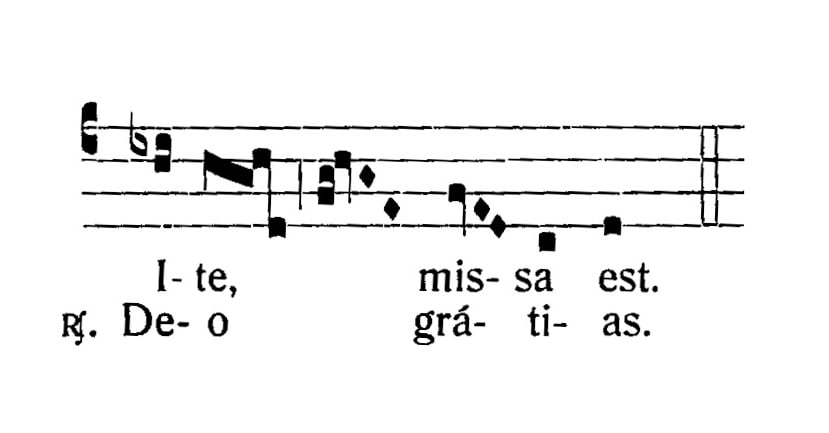
The Dismissal and the word Mass - March 29, 2020
The priest or deacon, who gives the final dismissal at the end of Mass, could say one of 4 things: Go forth, the Mass is ended; Go, and announce the Gospel of the Lord; Go in peace, glorifying the Lord by your life; or simply, Go in peace. These options exist not because it is nice to have options but because the original Latin, from which these possible translations come from, is somewhat obscure. The Latin, “Ite, Missa est”, could have a number of possible meanings, and may purposely be somewhat obscure so that more than one meaning is conveyed at the same time. A very literal translation of the Latin would be, “Go, is sent” or “Go, has been sent”. Obviously the noun or object of what is sent is missing. Traditionally the Latin was translated in people’s small Missals as “Go, the Mass is ended.” While this is a somewhat correct meaning of what is trying to be conveyed, it falls short of what is literally being said. By the way, it is from the word “missa” that we get the word “Mass”. The word “missa” is from the verb “to send”. Since we understand “The Mass” as the entire celebration of the Eucharist, or the Sacrifice of the Mass, it is not wrong to have the translation “Go, the Mass is ended”. According to experts, the noun that is missing from the Latin phrase is either “ecclesia” meaning church or assembly of people, or “hostia” meaning victim, in the sense of The Victim (Christ) who has offered Himself as a Victim for our sins. The noun may be purposely omitted so that both nouns would be understood in this ‘sending’. In the first case, the assembly of people (ecclesia) are now sent out into the world. They have benefited by their participation in the Mass - from the readings, the homily, the example of fellow believers, the prayers, the presence of the Sacrifice of Calvary on our altars, the true presence of Christ in the Eucharist, and their Communion with Him - and with the dismissal they are sent out to share all they have received with everyone they encounter. In the second case, the Victim on the Cross (the Hostia) has been offered up, or literally sent, to His Heavenly Father, which means the Sacrifice of the Mass is ended or completed in our presence, which means we can now go out. Christ crucified has been sent, and we too are sent out to share with others the spiritual goods we have received.
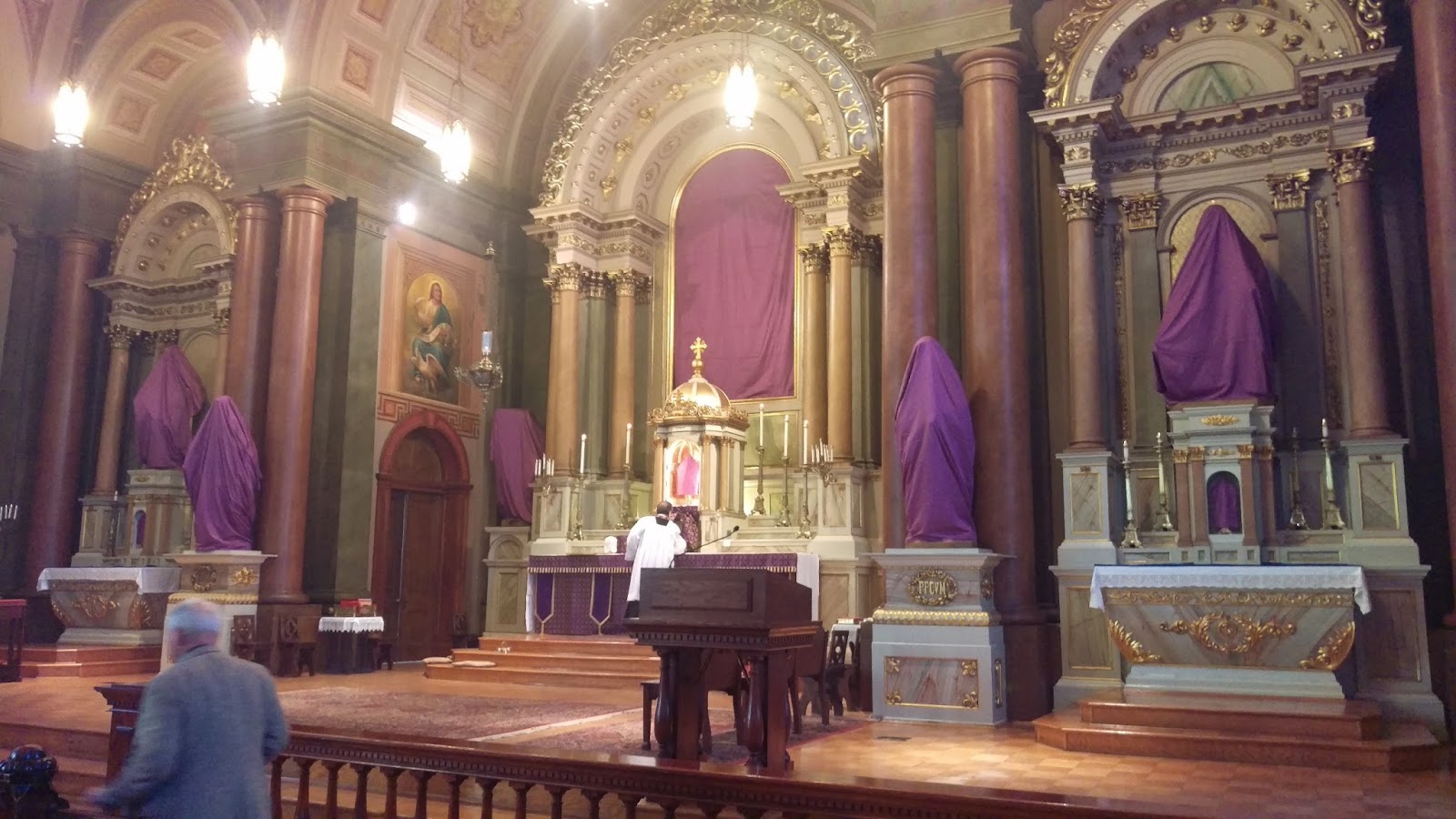
Covering Statues and Crucifixes - April 5, 2020
It is a Catholic tradition that two weeks before Easter all crucifixes, statues and pictures in the church are covered with purple cloth. This is done for a number of reasons. It is part of the Church’s liturgical self-denial; we deny ourselves these beautiful sacred images. Since we are to meditate even more on the Crucifixion of Our Lord during these two weeks before Easter, not seeing the Crucifixes and not being distracted by other images, compels us to use our imagination even more than usual. The veiling also reminds us that prior to the Crucifixion, which we will commemorate on Good Friday, we did not have any saints. It also reminds us that before Christ’s Crucifixion, there was a veil that separated us from God and the beautiful things of God, such as His Saints. The veiling also reminds us not to take things, and people, for granted. When we are deprived of these sacred images for a short period of time, we appreciate them more fully afterward.
